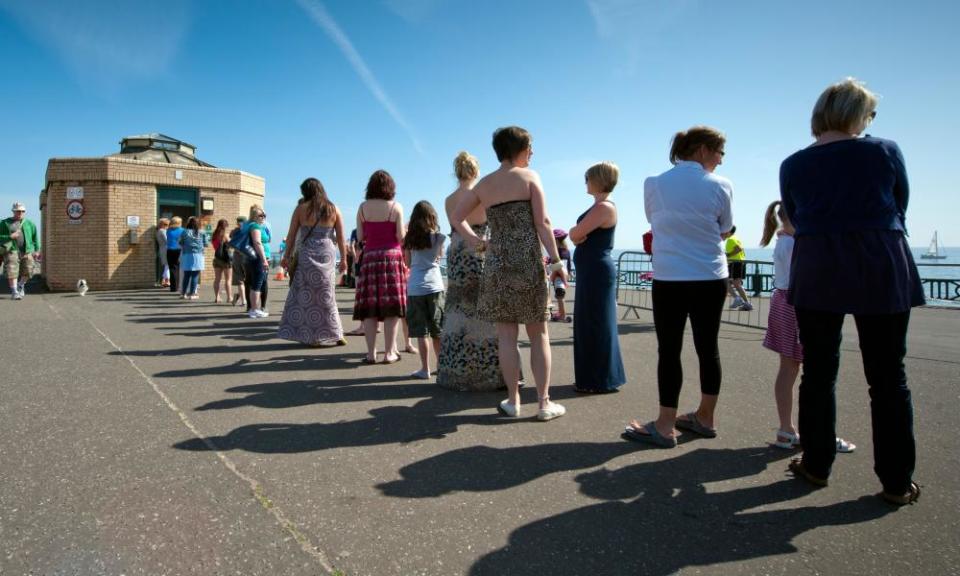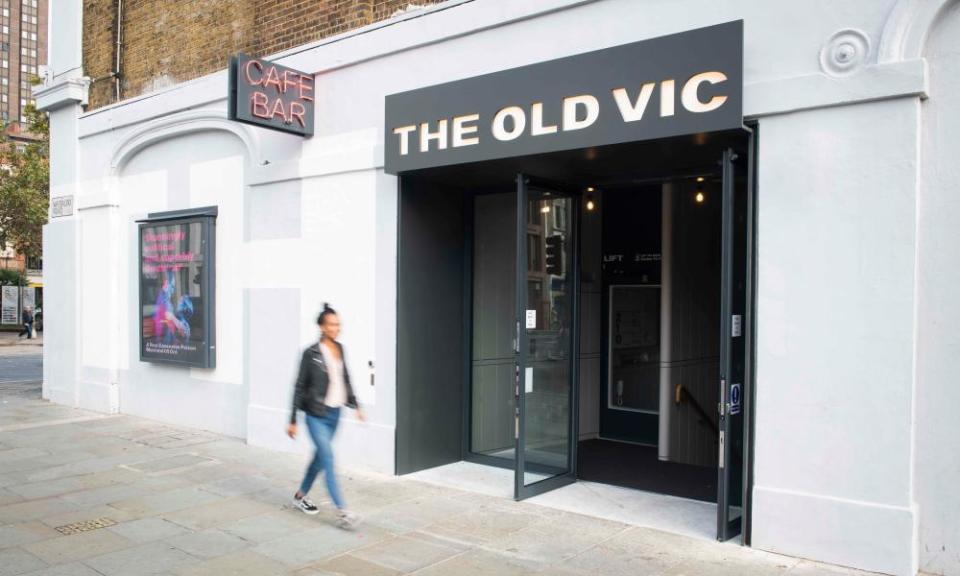The queue for womens' toilets is a feminist issue

Public toilet visits are sometimes urgent. But imagine the urgency of the presidential-nominee hopeful Hillary Clinton when she was caught short, mid-commercial break, during a Democratic debate in 2015. Clinton, the lone woman on the stage, had to walk a little further to get to the women’s loo than her male opponents, Bernie Sanders and Martin O’Malley. It might have been no more than a minor inconvenience, had Clinton not been on a deadline and the toilet in question not been occupied when she arrived. Sanders and O’Malley each returned from their relatively shorter trips, leaving them time to collect themselves.
Meanwhile, Clinton stood waiting to use the toilet. The seconds ticked away and the live televised debate resumed, as live televised debates must. A few moments later, Clinton strode back into the camera frame and took her podium, saying a simple “sorry” to the 6.7 million TV viewers.
The Boston Globe reported the next day that O’Malley’s deputy campaign manager, Lis Smith, got into Clinton’s loo first. To the conspiratorially minded, that might read as sabotage. But let’s face it: it feels like sabotage when women have to wait in loo queues and men do not. When the simplest of biological functions is made more difficult, and public spaces that much harder to navigate, all because you are a woman. You think you’re just peeing when you sit down in a public toilet. You’re not. Because toilets are, inescapably, a feminist issue. There are fewer public toilets every year. In the UK, there were 5,159 council-run toilets in 2010. That had dropped to 4,486 by 2018. The decline continues annually. But even when toilets are there, they don’t work for women as well as they do for men.
This isn’t about applying lipstick – a ridiculous trope that suggests lineups for women’s loos are created by hordes who just want to primp and preen. There are simply more of us in there, more of the time. Women empty their bladders more frequently than men and take longer – an average start-to-finish time of 60 seconds for men, but 90 for women. Women also visit the toilet for more reasons, such as changing tampons, and we care more often for children or adults who need our assistance.

Based on bleeding and bladders and babies, women need two to three times more provision than men, just to even out the waiting times. But in so many traditional public toilet setups, perversely, men often enjoy more facilities than women. When you can fit a cubicle and five urinals on the men’s side, you can only fit three cubicles in the same space on the women’s.
This means not only that women lose hours of their lives waiting in queues for the toilet, but that they cannot make use of public space in the same way as men. This legs-crossed conundrum is no accident. It’s a failure of planning and design. When loads of men design the world, doing little to find out about others’ experiences, the world ends up made mostly for those men.
Intentional? Nah. No freshly minted architecture or planning student thinks: I can’t wait to get out there in the working world so I can really screw over women in the built environment. But here’s where the sabotage lies: the solution to women’s public toilet woes is well known. It’s potty parity – a legislated or codified levelling of the peeing field through 2:1 or 3:1 ratios in favour of women. In the UK, potty parity remains a mere optimistic guideline of the British Standards Institution. In Canada and the US, in jurisdictions where it’s the law, potty parity is often required only for new buildings or in significant renovations of older ones.
But the lumbering pace of change isn’t all that’s wrong. There are perennial fights against common sense when it comes to women’s loos. London’s Old Vic Theatre, for example, had a £100,000 refit of its toilets this year, aiming to fix two issues: women arriving late back to their seats after the interval, and too few options for transgender patrons. Its fix? It scrapped male and female bathrooms, replacing them with one room containing toilet cubicles and one containing urinals. This change is laudable for its much-needed and gutsy all-gender approach, but it doesn’t leave a separate women’s-only loo.
In June, after a visitor to Zurich airport tweeted a photo of women queueing for the loo, inquiring politely when this would be dealt with, the airport authority responded with indignant insistence that the architects had “included enough space for the women”. But they clearly hadn’t because, as all can see, there are long queues for the ladies’ loos.
There are bright spots. The draft London Plan includes public toilets as part of the “delivery of a barrier-free and inclusive town centre environment”. A recent Royal Society for Public Health report calls on the government to force councils to build and maintain public toilets, and to provide the funding for them.
So for now, at the theatre, in the parks, at the shops, and even during commercial breaks at live televised events, queues for women’s loos will persist. And along with them, the urgency not merely to go, but for social change too.
• Lezlie Lowe is the author of No Place To Go: How Public Toilets Fail our Private Needs

 Yahoo News
Yahoo News 